It’s not enough just to have a clear company vision. You also need well-defined business goals to help your team translate that vision into reality.
Ideally, you want to set objectives that are attainable and help you grow. But with a seemingly endless variety of business goals, how do you know which ones to focus on?
Fortunately, there are plenty of resources out there that can help. To save you time, we curated a list of 26 top resources covering every aspect of the goal-setting process, including:
- Building a background for your business goals
- Common goal-setting strategies and frameworks goals
- Best practices for setting business goals
- Business goal examples
- Templates for setting business goals
- Common goal-setting strategies and frameworks goals
We’ve even included a list of bonus resources to help you communicate, track, and review your business goals.
Building a background for your business goals
The first step toward creating relevant, achievable business goals is defining your company vision and running analyses to take stock of where you are now. If you understand your company’s current condition, you can determine what gaps need to be filled through goal-setting.
1) How to Do a SWOT Analysis for Better Strategic Planning: This article provides a template and suggested questions to ask when running a SWOT (Strengths, Weaknesses, Opportunities, and Threats) analysis. It also gives advice for applying the results when creating your strategy. For example, you could use weaknesses you identify through your SWOT analysis to set goals that will help strengthen the company in that area.
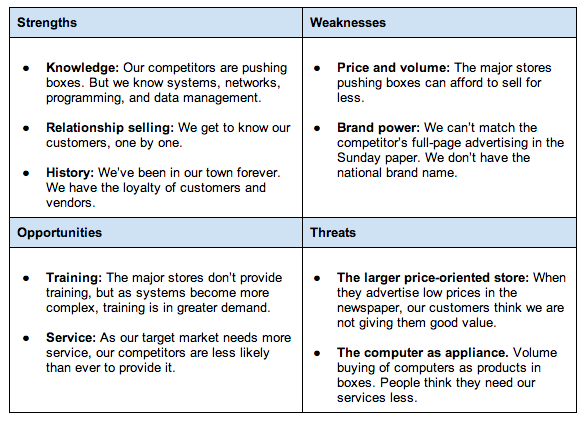
2) Mixpanel Product Benchmarks Report: Mixpanel’s report shows metrics for the Media, Finance, eCommerce, and SaaS industries, defining industry averages for metrics like engagement and numbers of active users. See how your company compares to the competition, and set business goals based on the benchmarks in the report.
3) Start with Why, by Simon Sinek: Sinek emphasizes the importance of identifying the purpose behind your company and product. His book focuses more on company vision than on specific goals, but it’s crucial to look at the big picture so that you can find goals to help you achieve your broader purpose.
Common goal-setting strategies and frameworks
Make setting business goals a little easier by following an established process. These are some of the most common and popular frameworks to help give you some structure. Keep in mind that these strategies and frameworks are not mutually exclusive. For example, you can use OKRs to set goals and KPIs to measure progress toward those goals.
4) A complete guide to key performance indicators: Definition, uses and examples: This guide defines KPIs and explains how to use them to track goal progress.
5) All About OKRs: How To Set Them, Achieve Them, And Track Them in Trello: This overview of the OKR (objectives and key results) goal-setting framework includes advantages and examples of OKRs in action. Published by Trello, it also has a breakdown of how to track OKRs in the company’s productivity platform.
6) Amplitude’s North Star Playbook: In this piece, Amplitude outlines its North Star framework—a product management model where you define your company’s number one most important metric and set goals around it.
7) The Balanced Scorecard: Here, the Balanced Scorecard Institute explains a strategic framework focused on giving you a complete overview of your business so that you can set goals tailored exactly to your needs. The strategy involves examining financial and customer aspects of the company, including customer satisfaction and retention. It also looks at internal processes and organizational capacity.
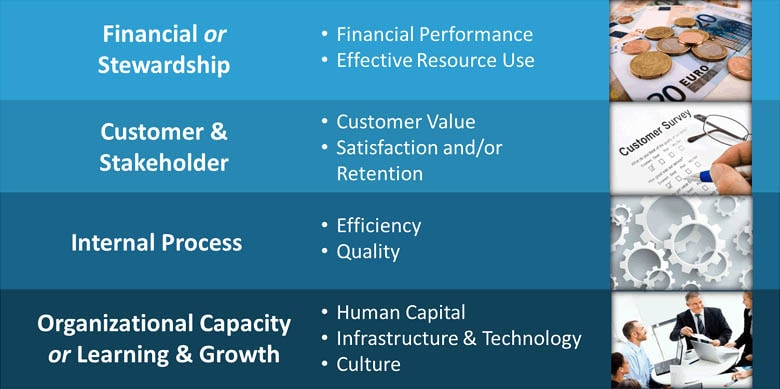
8) Company Alignment: The Salesforce Secret to Success: In this piece, Salesforce’s CEO explains his V2MOM method: Vision, Values, Methods, Obstacles, and Measures. Use his strategy to define where your company is, where you want it to go, and how you’ll get there—all crucial aspects of setting business goals.
9) HARD Goals: The Secret to Getting From Where You Are to Where You Want to Be: In this summary of Mark Murphy’s seminal book on the topic, you can learn about the HARD (Heartfelt, Animated, Required, Difficult) goal framework. It is an alternative framework to SMART goals that focuses more on internally motivating factors.
10) Management by Objectives (MBO): This guide from Investopedia walks you through the MBO strategy, which encourages employees and managers to set goals collaboratively.
11) Setting effective goals: This resource details the SMART (Specific, Measurable, Assignable, Realistic, and Time-Bound) goal framework, including pros and cons. For more about SMART goals, check out this bonus SMART goal cheat sheet:
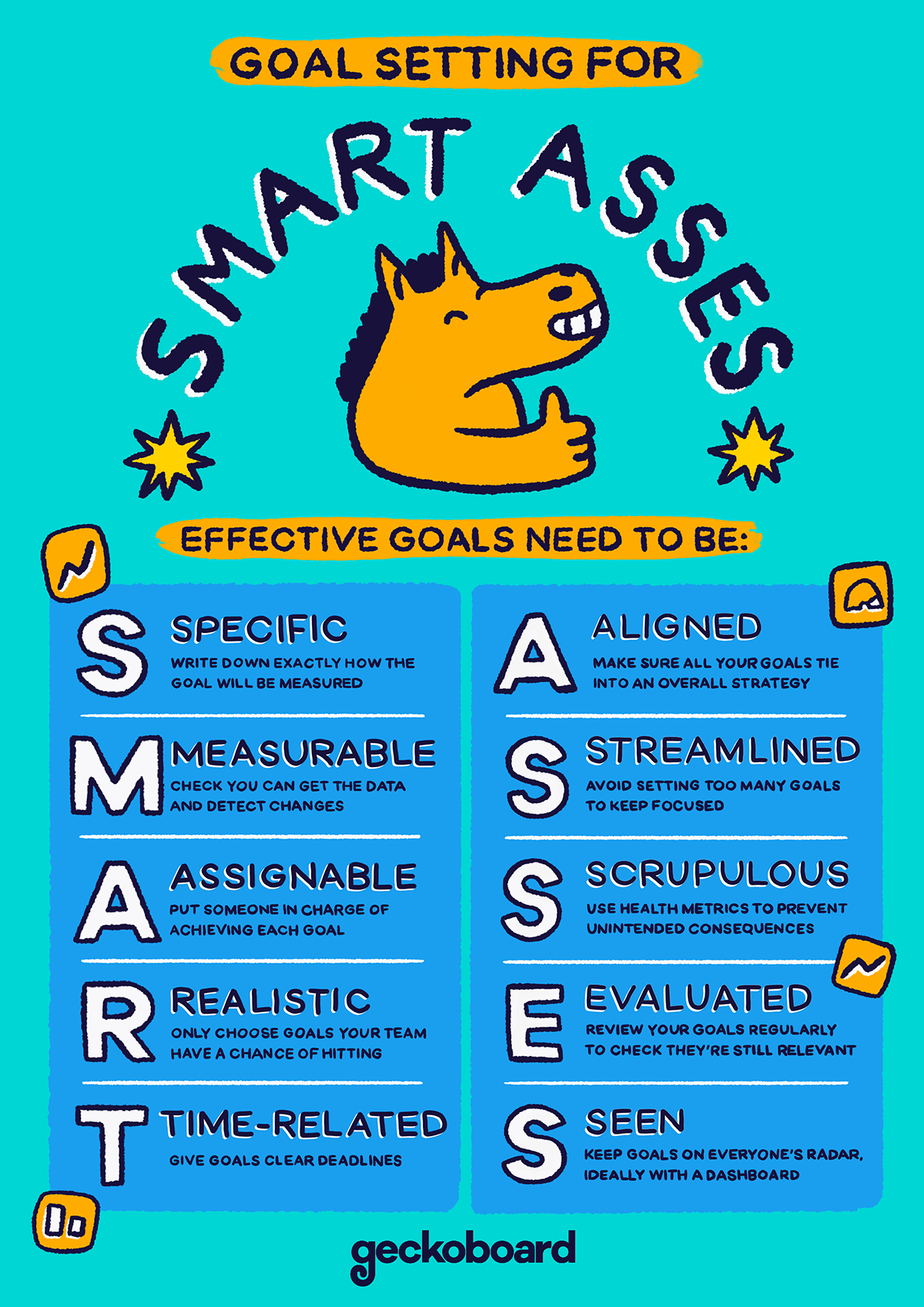
Best practices for setting business goals
If you want to know the dos and don’ts of developing business goals, it pays to learn from the experts. Check out these resources to see how to set goals to motivate employees, plan long-term and short-term strategy, and more.
12) 7 tech founders lift the lid on how they set goals: Here, founders and CEOs from small to medium-sized companies share their goal-setting techniques. For example, the CEO of Segment shares the company’s mission-to-metrics approach to goal organization.
13) 18 Tips for Setting Better Goals: This piece offers quick tips for every aspect of setting business goals, from running company analyses to methods for defining goals and tracking your progress.
14) Common pitfalls to avoid when setting team goals: This piece discusses what not to do when defining goals for your team. For example, it’s better not to aim for extreme objectives, either ones that are too safe or ones that are far too aggressive.
15) Don’t Let Metrics Undermine Your business: This Harvard Business Review piece advocates for seeing the forest, not just the trees, when it comes to goals. Learn about focusing on your high-level company vision when setting business goals rather than getting bogged down in individual KPIs.
16) How effective goal-setting motivates employees: This McKinsey resource explains different ways to involve team members in the goal-setting process and ensure that you have buy-in from all levels of the company on your business goals.
17) Strategic vs. Tactical Planning: The What, When, & Why: HubSpot lays out the differences between setting long-term and short-term goals and explains how to use these goals together for a complete company strategy.
Business goal examples
While you want to make sure your objectives are based on your current company’s circumstances, it can be useful to see goal examples. In particular, examples can help guide you as you learn about and apply a new goal-setting framework.
18) 19 Small Business Goals You Can Set This Year: An excellent resource for small businesses and startups, this article provides examples of overarching business goals to help small companies grow and improve.
19) 56 Strategic Objective Examples For Your Company To Copy: Here, you can see examples of broader organizational goals, organized by category. For example, the resource has examples of financial goals and learning and growth goals.
20) 90+ KPI examples to keep your company on track: Here is an extensive list of more than 90 key performance indicators for different departments and types of businesses, with explanations for each KPI.
21) OKR Examples: This comprehensive resource offers a variety of OKR examples organized by department, including customer service, marketing, HR, and more.
22) Setting sales goals in 2020: How to achieve success in today’s changing climate: This guide is perfect for sales teams. It discusses different types of sales goals, including specific examples for each goal type.
23) SMART Goal Examples: Here you’ll find examples of SMART goals, broken down to show how each goal fits into the SMART framework.
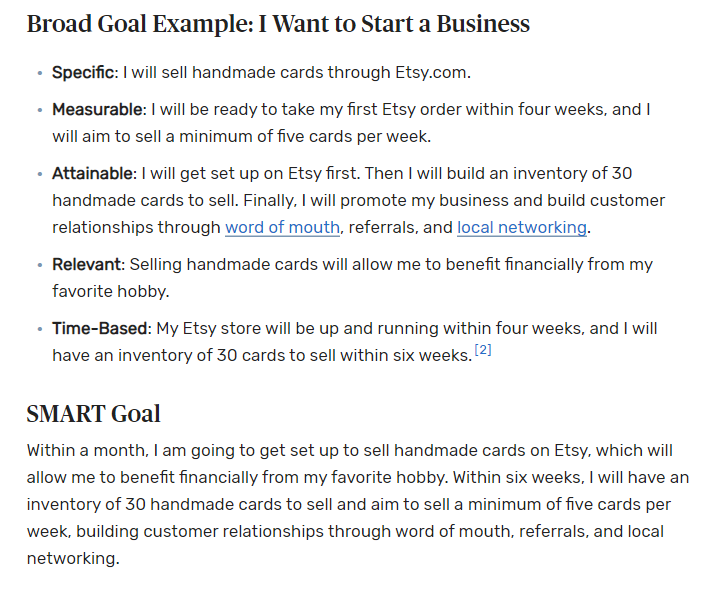
Templates for setting business goals
If you’re building goals using a particular goal-setting framework, it can be helpful to follow a template for your first few objectives. You simply need to fill in your business’s information; you’ll then be well on your way to defining clear, structured goals for your team.
24) How To Succeed In 2020 With This Goal Setting Strategy: This resource includes a template for applying the V2MOM strategy used by Salesforce to your business.
25) OKR Templates: If you plan to try the OKR framework, this resource is for you. It includes OKR templates in multiple formats: a spreadsheet, a text document, and an OKR planning software.
26) SMART Goal Template, with bonus criteria: Geckoboard created this free, downloadable asset to guide you in using the SMART goal framework.
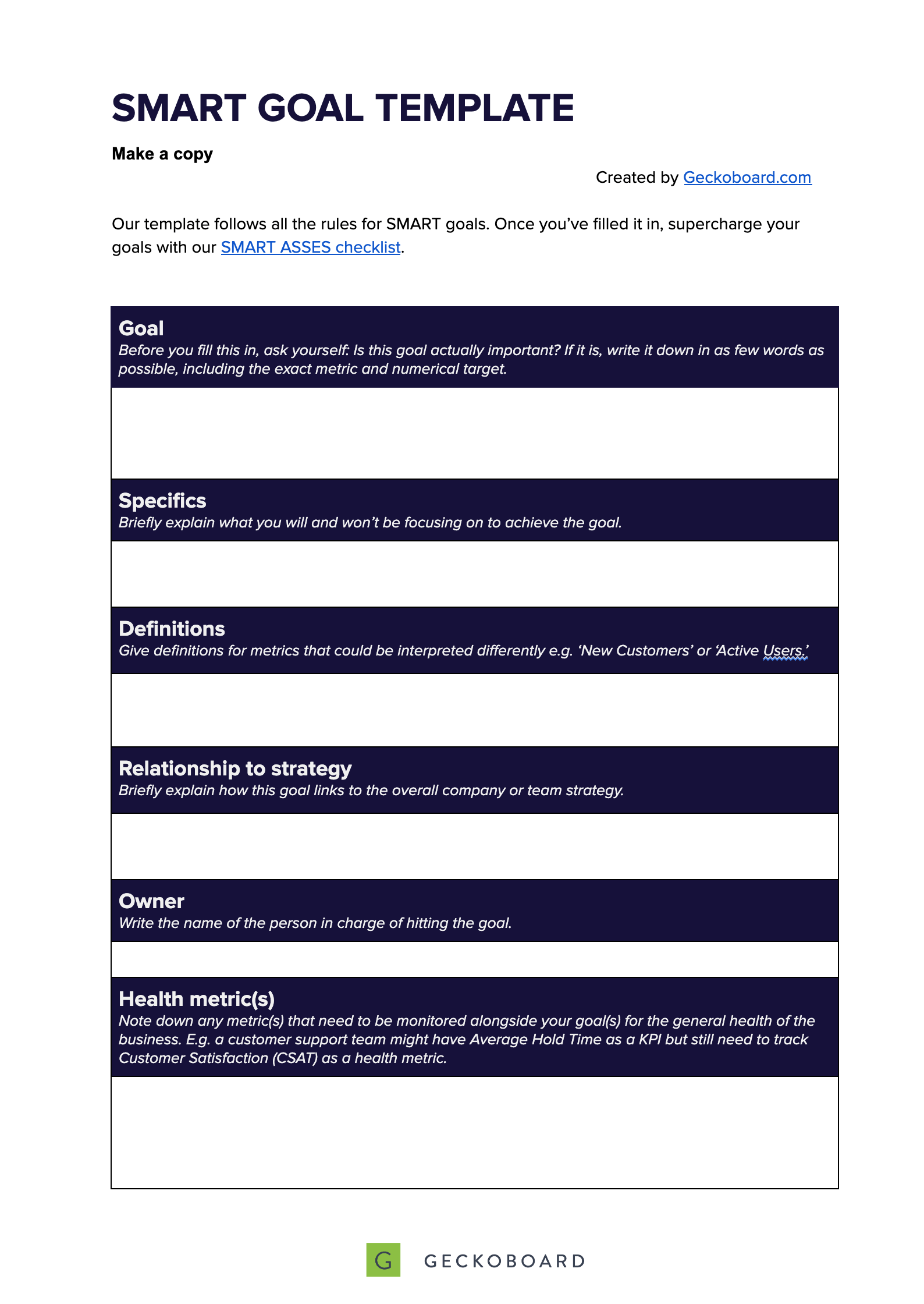
Next steps: Communicating, tracking, and reviewing business goals
Take your time to go through these resources. Setting business goals might seem confusing, but with help from the experts and the advice in this list, you can find the right framework and build the best goals for your team.
Of course, setting your goals is only part of the challenge. You also need to communicate these goals with your current team and new employees, develop systems to reach your objectives, and find ways to measure your progress. It’s also essential to regularly review your goals at least once a year to make sure they’re still aligned with your strategy.
Don’t worry—there are resources to help with these next steps, too! Here are a couple to get you started:

